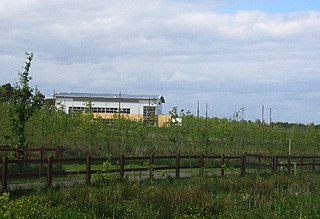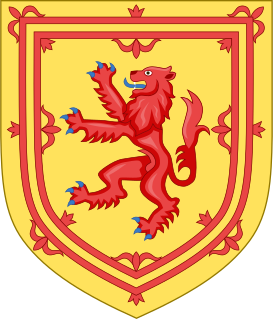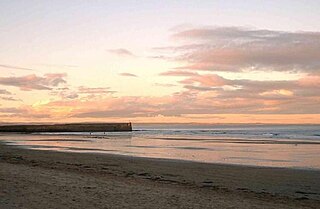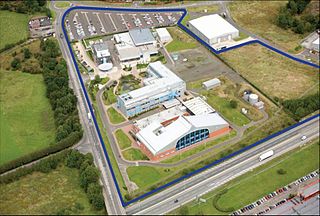 W
WArchaeology Scotland, formerly known as the Council for Scottish Archaeology (CSA) is a membership organisation which seeks to promote the understanding of archaeology in Scotland. This group works with lay people and academia to help care for the great history of Scotland's archaeological heritage. Their charitable and philanthropic work serves to enrich the story and deep history of Scotland. The organization is responsible for coordinating a number of archaeology related events, such as Scottish Archaeology Month and Adopt-a-Monument.
 W
WThe Association in Scotland To Research into Astronautics (ASTRA), is a membership-based society that concerns itself with all matters related to space research. Its current center of operations is in the Scottish city of Glasgow and it is affiliated to a number of other bodies, including the Federation of Astronomical Societies and the Glasgow Council for the Voluntary Sector.
 W
WThe Biocampus is an enterprise area in Midlothian, Scotland. It is part of the larger Edinburgh Science Triangle, which includes the Edinburgh BioQuarter and was the first dedicated national bio-manufacturing campus. Development on the site is supported through financial incentives and business rate reduction through the Scottish Government's enterprise area scheme.
 W
WThe Careers Scotland Space School, also known as the Scottish Space School, is an organisation set up by Careers Scotland and funded by the Scottish Government. This is a government programme, organised as a partnership initiative with NASA, to encourage young people to gain an interest in STEM subjects, Science, Technology, Engineering and Maths.
 W
WThe Communities Directorates are a group of civil service Directorates in the Scottish Government. The individual Directorates within the overarching Communities Directorates report to the Director-General, Paul Johnston.
 W
WThe Scottish Government Economy Directorates are a group of civil service Directorates in the Scottish Government. They were rebranded as the Economy Directorates in July 2016, having previously been reorganised in December 2010 and then in June 2014.
 W
WThe Edinburgh Science Triangle (EST) is a multi-disciplinary partnership between universities, research institutes, the National Health Service, science parks, the national economic development agency Scottish Enterprise, and central and local government in Edinburgh and neighbouring council areas. The three points of the "triangle" are Livingston in West Lothian, Musselburgh in East Lothian, and the Easter Bush campus in Midlothian.
 W
WFSC Millport, run by the Field Studies Council, is located on the island of Great Cumbrae in the Firth of Clyde, Scotland. The field centre was formerly known as the University Marine Biological Station Millport (UMBSM), a higher education institute run by the University of London in partnership with Glasgow University but was closed due to the withdrawal of higher education funding in 2013. FSC reopened the centre in 2014 and continues to host and teach university, school and college groups and to support and host research students from all over the world, whilst also extending its educational reach and providing a variety of courses in natural history and outdoor environmental activities for adult learners and families to enjoy. The centre is a very popular conference venue hosting many international events. The Robertson Museum and Aquarium is open to visitors between March and November. The centre also functions as a Meteorological Office Weather Station and Admiralty Tide Monitor.
 W
WThe Gatty Marine Laboratory is a science facility located in the coastal town of St Andrews in Fife, Scotland. It is part of the University of St Andrews and home to the Scottish Oceans Institute, an interdisciplinary research institute studying the marine environment, specifically the behaviour, ecology, physiology, population biology and functional genomics of marine organisms. The Gatty Marine Laboratory is known as the place where Richard G. Morris developed the Morris water navigation task in the early 1980s.
 W
WDame Lesley Anne Glover is a Scottish biologist and academic. She was Professor of molecular biology and cell biology at the University of Aberdeen before being named Vice Principal for External Affairs and Dean for Europe. She served as Chief Scientific Adviser to the President of the European Commission from 2012 to 2014. In 2018 she joined the Principal's senior advisory team at the University of Strathclyde.
 W
WBlantyre is a town and civil parish in South Lanarkshire, Scotland, with a population of 16,900. It is bounded by the River Clyde to the north, the Rotten Calder to the west, the Park Burn to the east and the Rotten Burn to the south.
 W
WThe Human Tissue (Scotland) Act 2006 is an Act of the Scottish Parliament to consolidate and overhaul previous legislation regarding the handling of human tissue.
 W
WThe Institution of Engineers and Shipbuilders in Scotland (IESIS) is a multi-disciplinary professional body and learned society, founded in Scotland, for professional engineers in all disciplines and for those associated with or taking an interest in their work. Its main activities are an annual series of evening talks on Engineering, open to all, and a range of school events aimed at encouraging young people to consider Engineering careers.
 W
WThe Minister for Higher Education and Further Education, Youth Employment and Training is a Junior ministerial post in the Education Department of the Scottish Government. As a result, the Minister does not attend the Scottish Cabinet. The post was created in May 2007 after the appointment of the Scottish National Party minority administration and the Minister reports to the Cabinet Secretary for Education and Skills, who has overall responsibility for the portfolio, and is a member of cabinet. The Minister has specific responsibility for further education and colleges, higher education and universities, science and STEM (science, technology, engineering and mathematics, student funding, youth work, and widening access to education.
 W
WThe Scottish National Antarctic Expedition (SNAE), 1902–1904, was organised and led by William Speirs Bruce, a natural scientist and former medical student from the University of Edinburgh. Although overshadowed in terms of prestige by Robert Falcon Scott's concurrent Discovery Expedition, the SNAE completed a full programme of exploration and scientific work. Its achievements included the establishment of a manned meteorological station, the first in Antarctic territory, and the discovery of new land to the east of the Weddell Sea. Its large collection of biological and geological specimens, together with those from Bruce's earlier travels, led to the establishment of the Scottish Oceanographical Laboratory in 1906.
 W
WThe Newhouse Research Site is a drug research facility situated 15 miles (24 km) east of Glasgow in central Scotland. It is located beside the M8 motorway in Newhouse, North Lanarkshire. The site is an early drug discovery research centre with a track record of generating a succession of products in the areas of anaesthesia and psychiatry. In 2007, the Royal Society of Chemistry Malcolm Campbell Memorial Prize was awarded to researchers for its work on a new anaesthesia drug, sugammadex. It currently employs 250 scientists across a range of disciplines including medicinal chemistry, molecular biology and drug metabolism. The site is currently the largest private drug discovery centre in Scotland, and one of the biggest in the UK.
 W
WThe Rivers and Fisheries Trusts of Scotland (RAFTS) is a waterway society, an unincorporated association, a Scottish charity, and an umbrella organisation for river trusts in Scotland, based in Edinburgh.
 W
WThe Royal Caledonian Horticultural Society (RCHS) is the national horticultural society of Scotland, and was founded in 1809. Members include both amateur and professional, generalists, specialists and those who simply like gardens and gardening. The aim of the society is to inspire, encourage and support the science, art and practice of all types of horticulture in Scotland and to advance education in gardening and horticulture for everyone. It was a founding part in the establishment of 'Gardening Scotland'.and in the formation of the 'Scottish Gardeners Forum', organisations with which it continues to maintain strong links.
 W
WThe Royal College of Science and Technology was the principal predecessor institution of the University of Strathclyde, and now serves as one of the main educational buildings of the University of Strathclyde.
 W
WThe Royal Scottish Forestry Society was founded in 1854 as the Scottish Arboricultural Society. In 1869, the society received the patronage of Queen Victoria and the "Royal" prefix was added in 1887. The name changed to the current one in 1930.
 W
WThe Royal Zoological Society of Scotland is a learned society and registered charity based in Edinburgh, Scotland. It was founded by, Thomas Haining Gillespie, in 1909. In 1913, Edinburgh Town Council bought a large plot of land on Corstorphine Hill for the society - this later opened to the public as Edinburgh Zoo. The Society received its Royal Charter in 1913. The principal objective of the Society mentioned in the original charter is: To promote, facilitate and encourage the study of zoology and kindred subjects and to foster and develop amongst the people an interest in and knowledge of animal life.
 W
WSASA is a division of the Scottish Government Agriculture and Rural Delivery Directorate. It provides scientific advice and support on a range of agricultural and environmental topics to the Scottish Government.
 W
WThe Schiehallion experiment was an 18th-century experiment to determine the mean density of the Earth. Funded by a grant from the Royal Society, it was conducted in the summer of 1774 around the Scottish mountain of Schiehallion, Perthshire. The experiment involved measuring the tiny deflection of the vertical due to the gravitational attraction of a nearby mountain. Schiehallion was considered the ideal location after a search for candidate mountains, thanks to its isolation and almost symmetrical shape.
 W
WThe Scottish Association for Marine Science (SAMS) is one of Europe's leading marine science research organisations, one of the oldest oceanographic organisations in the world and is Scotland's largest and oldest independent marine science organisation.